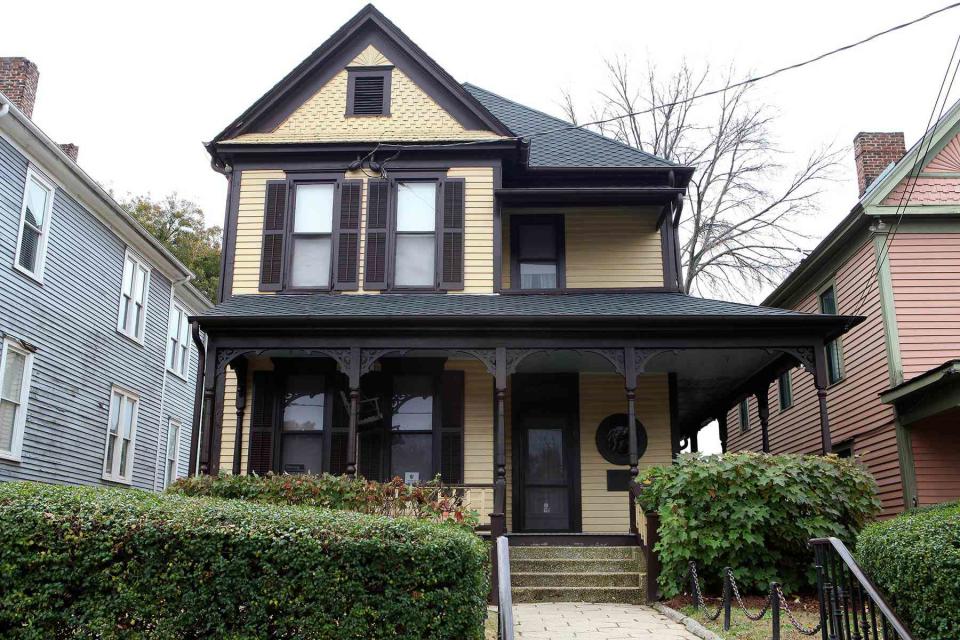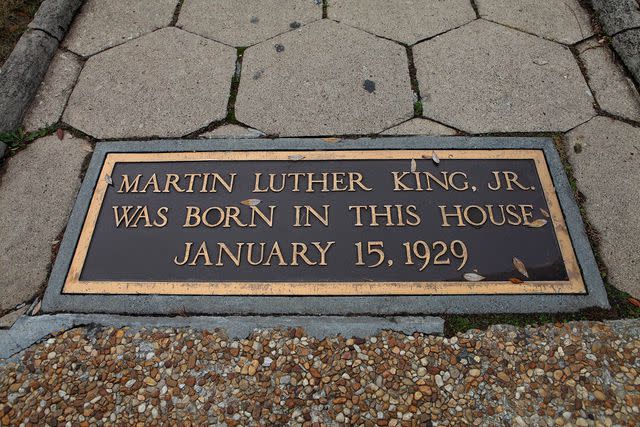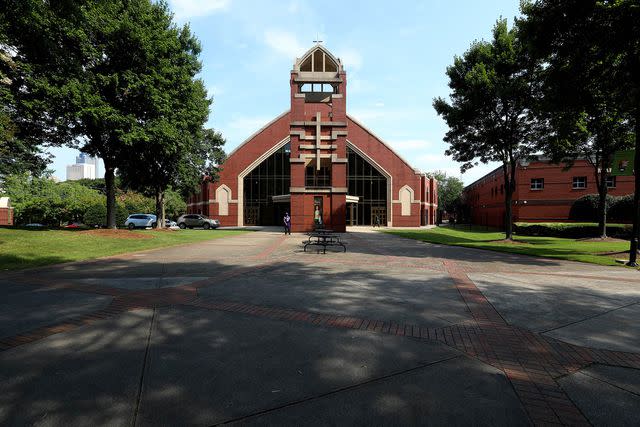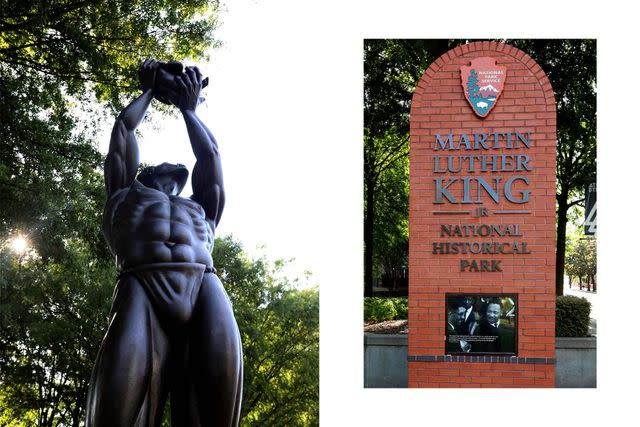This National Park Site Is Home to the Most Momentous Landmarks in Martin Luther King Jr.’s Life
- Oops!Something went wrong.Please try again later.
- Oops!Something went wrong.Please try again later.
- Oops!Something went wrong.Please try again later.
The 35-acre site includes his birth home, church, and crypt.

Raymond Boyd/Getty Images
Before he left an indelible mark on American history, Martin Luther King, Jr. spent his early days in Atlanta in a neighborhood surrounding Auburn Ave. that locals referred to as "Sweet Auburn." Today, the area has been memorialized as a Martin Luther King, Jr. National Historic Park — and has become one of the Georgia capital’s most popular attractions.
The 35-acre area includes some of the most formative sites of Dr. King’s life, starting with his birth home at 501 Auburn Ave. The 2-story Queen Anne-style home with a wrap-around porch was built in 1895, and bought by his maternal grandfather in 1909 for $3,500. His father moved in with his mother and parents after their 1926 wedding, and Dr. King was born at the family home on Jan. 15, 1929 — spending the first 12 years of his life there.
The only way to step inside the home is on a ranger-led tour. With modified pandemic restrictions, the tour runs Mondays through Saturdays between 10 a.m. and 4 p.m. and is limited to 10 people. (Only 10 minutes of the 30-minute tours will be indoors.) Since advanced reservations aren’t taken, visitors are advised to sign up for a slot at the visitor center upon arrival. (The park recommends visiting earlier in the week and earlier in the days, but to expect a few hours before the next available tour.)

Raymond Boyd/Getty Images
While waiting for the tour, visitors can explore the other sites on the premises, like the other highlight, Ebenezer Baptist Church, at 407 Auburn Ave. This is where Dr. King was baptized, as well as ordained as a minister when he was 19, after giving a trial sermon to his own congregation. While he soon left to attend Crozer Theological Seminary, he later returned and became co-pastor with his father, Rev. Martin Luther King Sr., who people referred to as “Daddy” King, in 1960. After his untimely death in 1968, his funeral was also held at his beloved church. (Generally the church is open Tuesday through Friday from 10 a.m. to 4 p.m., but may be closed depending on staffing.)

Raymond Boyd/Getty Images
Also on-site is Fire Station No. 6, which was built in 1894 and served the neighborhood until 1991. While opening hours may also depend on staff availability, the station, which played a major role in the desegregation of the Atlanta Fire Department, has an American LaFrance fire engine from 1927 on view.
The National Historical Park is also home to the MLK Jr. World Peace Rose Garden, which was planted in 1992 with 185 roses as part of the International World Peace Rose Gardens program to instill the importance of peace to the future generations.
“The garden is an artistic interpretation of Dr. King’s life and ideals of peace through nonviolence,” the NPS site describes. “The garden’s starburst design brings attention to the brilliance of Dr. King’s ideals using the official flower of the United States, the rose.” Every year, a youth peace poetry contest is held, with the winning one being displayed at the garden for a year.
Another symbolic stop is the Behold monument, unveiled in 1990 by Dr. King’s late widow Coretta Scott King, depicting the ancient African tradition of holding a newborn up to the heavens and saying the words, “Behold the only thing greater than yourself.”
The sculptor Patrick Morelli wanted to honor the aspects of Dr. King’s character that made him a “truly great man,” including “his ability to defend a morally courageous — though often, unpopular — cause in the face of, seemingly, overwhelming opposition and, second, his ability to maintain his dignity and a genuine spirit of brotherhood in the face of the cruelest and most ignorant threats, insults, and indignities believing that, ultimately, the righteousness of his convictions and beliefs would prevail.” he described in a statement on the NPS site.

Raymond Boyd/Getty Images
To preserve his legacy, Mrs. King started The Martin Luther King, Jr. Center for Nonviolent Social Change, or simply The King Center, in 1968, also on the National Park Service (NPS) grounds. She envisioned it as “no dead monument, but a living memorial filled with all the vitality that was his, a center of human endeavor, committed to the causes for which he lived and died.”
It's here that lies Dr. and Mrs. King’s crypts, as well as The Eternal Flame which “symbolizes the continuing effort to realize Dr. King’s dream of the ‘Beloved Community,’ which was his vision for a world of justice, peace and equality for all mankind,” according to The King Center, whose CEO is Bernice King, Dr. King's youngest child.
While operations at the visitors center are currently limited (its theater and D.R.E.A.M. Gallery are closed), it's still worth spending some to explore the "Courage To Lead" exhibiting, which tracks Dr. King's journey alongside the Civil Rights Movement. The lobby also has a "Children of Courage" exhibit for younger visitors.
Admission to the park is always free. Those driving can park in the lot at on John Wesley Dobbs Avenue, or those visiting via public transportation can travel on the Atlanta Streetcar, which has a Martin Luther King Jr. National Historical Park stop.
For more information on the Martin Luther King, Jr. National Historic Park, visit its NPS site or The King Center,
For more Travel & Leisure news, make sure to sign up for our newsletter!
Read the original article on Travel & Leisure.

